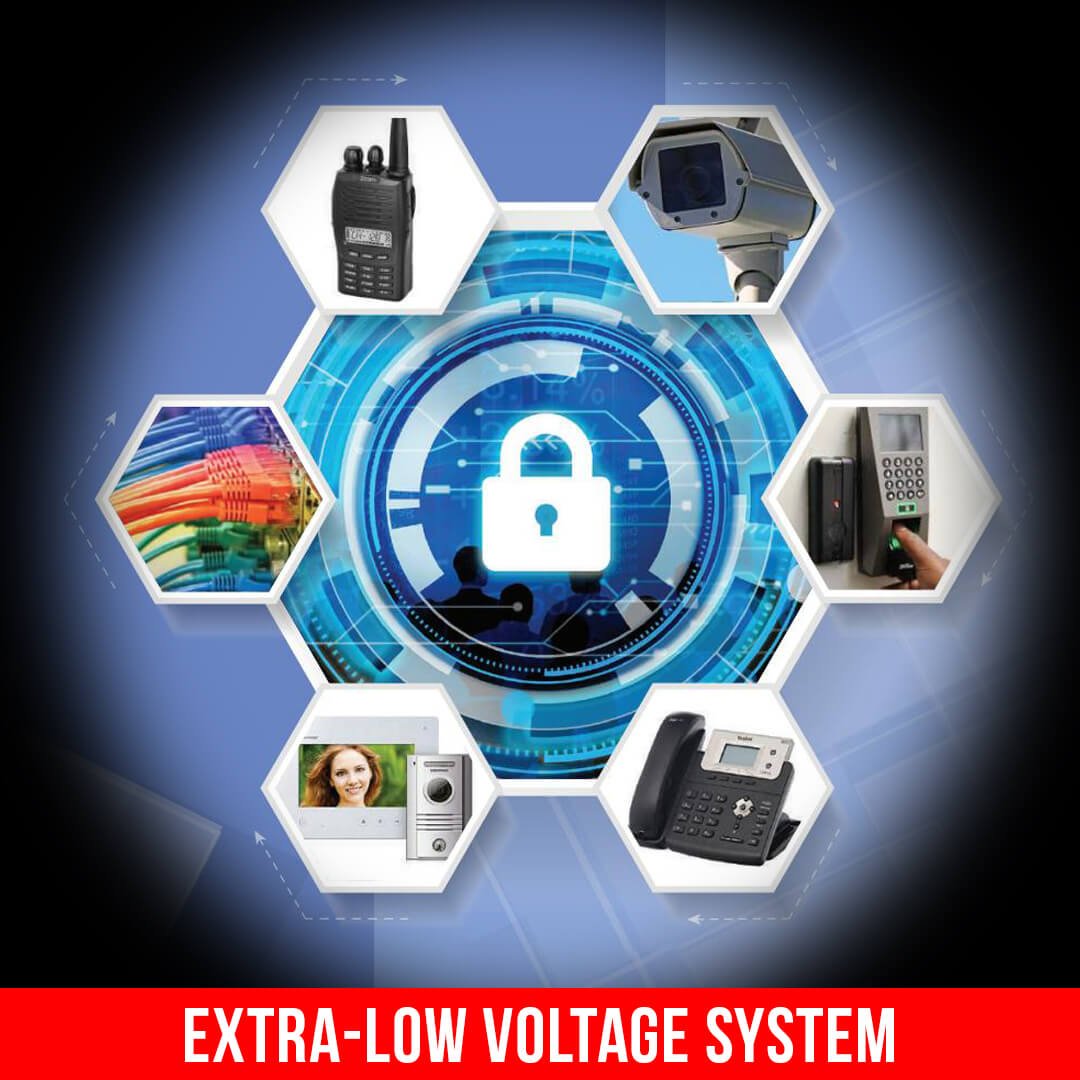
EXTRA LOW VOLTAGE(ELV)
Extra-Low Voltage System: ELV System for Buildings stands for Mechanical and Electrical. ELV deployed in residential and commercial networks for better control and security.
Extra-Low Voltage is the voltage of the electricity supply being in a range that is low enough that it does not take any high risk of any high voltage electrical shock. Extra-Low Voltage is alternating current not more than 50 V AC and direct current not exceeding 120 V DC. This is founded on the measures as per EN 61558 or BS 7671.
That’s why Extra-Low Voltage Systems are any electrical systems that can work on a low voltage. An extra-Low Voltage (SELV) system is an alternating current of up to 50 V and voltage up to 120 V. that is electrically separated from other circuits that carry higher voltages, separated from the planet and the protective planet conductors of other circuits.
Running equipment must be connected to an extra-low voltage with secure isolation from other electrical circuits.
For more information contact us » +917009252789.

Components of ELV Systems
Closed Circuit Television System
Types of Extra Low Voltage
Protective Extra-Low Voltage
Separated Extra-Low Voltage
Functional Extra-Low Voltage
Closed Circuit Television System
A closed-circuit television system, also generally known as CCTV, is created up of a network of cameras and recording systems that are connected. This system is classified as a ‘closed’ system as the system works independently. A CCTV system is a useful way to observe and secure any sensitive area.
Cameras can be attached either wired or wireless to a CCTV system. CCTVs are an effective deterrence to any threats or areas that need constant offsite monitoring.
CCTV cameras are the positioning of the camera, to ensure that the camera can observe the required area in its scope of view as well as the clearness of the video footage. To ensure the usability of the footage if necessary.
Types of Extra Low Voltage
Extra Low Voltage is a less electricity supply voltage utilized in houses, parks, swimming pools, wandering-lead handlamps & portable appliances for outdoor help to eliminate the risk of electric shock.
An AC voltage should be below 50 volts and a DC voltage below 120 volts is considered ELV. Systems. Some examples of Extra Low Voltages are telephone, data transmission, LAN, CCTV, fire alarm & master clock systems operating on ELV. ELV is used to decrease the risk of an electric shock compared to normal voltage.
Types of ELV:
- Protective Extra-low voltage (PELV),
- Separated Extra Low Voltage (SELV)
- Functional Extra Low Voltage (FELV)
Protective Extra-Low Voltage
These systems use where low voltage is required. It is preferred for safety than in high-risk Locations.
However, protection against direct contact risks is generally essential, except when the equipment is in a zone of equipotential bonding, and the nominal voltage must be less than 25 V or 25V RMS and the equipment is used in normally dry locations only, and large-area contact with the human body is not expected. In another case, 6 V RMS is the maximum permitted voltage then direct contact is not at any risk.
Separated Extra-Low Voltage
In Separated Extra-Low Voltage, a single fault cannot be the cause for an electric shock. It is because the Low-voltage output is electrically disconnected from the earth & other systems and systems are used where the operation of electrical equipment shows a serious risk.
Functional Extra-Low Voltage
Functional Extra-Low Voltage systems can be used for functional purposes like machine control systems. A voltage of less than 50V or 50 V is used. Appropriate measures must be taken to ensure protection against both direct and indirect contact risks, according to the location.
Safety by extra-low voltage, recognized by providing electrical systems with secure voltages, is a measurement against direct and indirect contact, appropriate in all circumstances, but especially displayed in watery areas or in restrictive conductive areas
